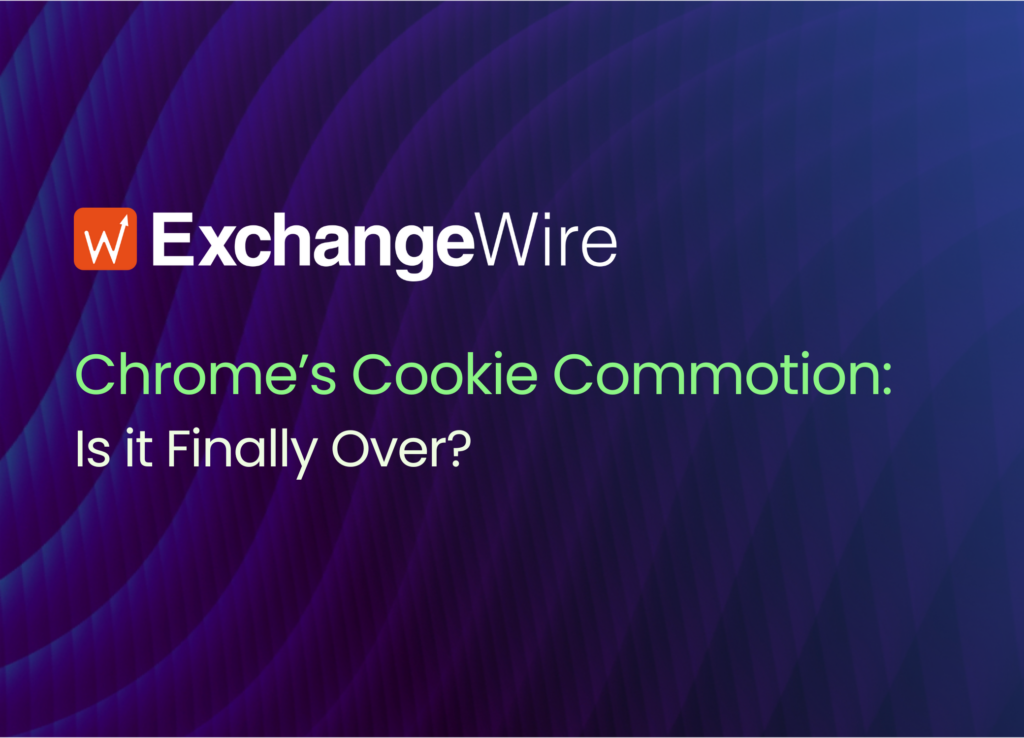The AI Advantage of an End-to-End Tech Stack
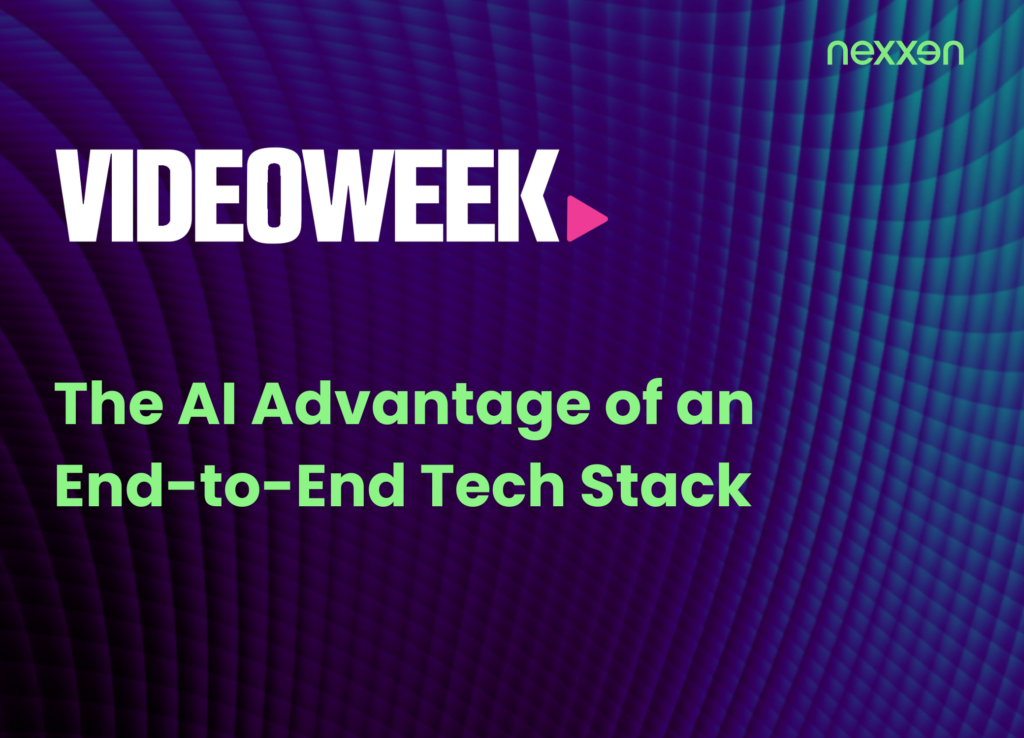
Life at Nexxen with Catherine Dauphin
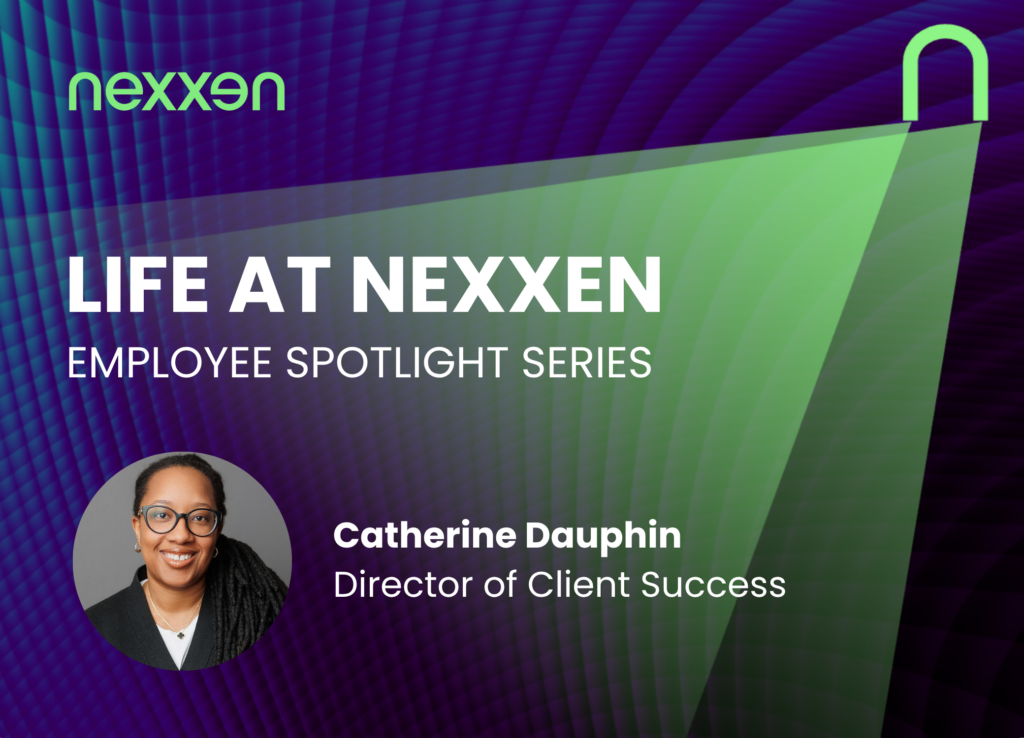
Linkedin Icon-xtwitterlogo-black Life at Nexxen is a blog series spotlighting our employees – from their career journeys and go-to advice to the rituals and activities that make up their days here at Nexxen. In this edition of Life at Nexxen, we spoke with Catherine Dauphin, Director of Client Success from our New York office. Catherine spoke about her path to leadership, what she believes is most important as a manager, and how she spends the first ten minutes of the day. How long have you been with Nexxen? I just celebrated my 14th anniversary, originally joining the company on the Tremor Video side. That’s a long time! Since you’ve been with the company through multiple acquisitions, what has helped you manage the challenges of new teams, processes, and overall change? It’s a new experience with new opportunities for growth. Understanding that with the change, you can look forward to what is coming. There was always excitement with each acquisition, which is why I’ve continued my career here for so many years. What was your first role at Tremor Video? I joined Tremor Video as an Account Manager, recruited by one of the sellers in the auto vertical. I had actually worked previously at an agency specializing in automotive accounts, so she knew I had relevant experience. I was new to video when I started at Tremor; I had the digital experience, but it was mostly display. I learned all about video as an Account Manager, and then progressed into management and higher leadership roles. Did you always want to go into leadership? Or was it something that you naturally gravitated towards as you progressed in your career? I didn’t know from the start of my career that I specifically wanted to achieve a leadership role. It grew out of me becoming a better Account Manager and becoming more senior on the team. I became the go-to person to train any new hires, and that naturally led me towards wanting to pursue a leadership role. I knew I could do well in a leadership role because I truly enjoy helping people. So I worked hard to become a Manager, then a Senior Manager, and now a Director. As a manager, how do you make sure that you’re bringing out the best in your team? It’s important to lead by example. I’m the type of manager that’s willing to roll up my sleeves and do the work alongside my team. I don’t just delegate but often offer to sit side by side to figure out a solution. If someone on my team goes out of office, I will step in and cover their work for them. Not only do I feel like it shows that I’m helping them, but it actually helps me too. My motto is “if you don’t use it, you lose it.” It sounds like you’re an amazing manager. In that vein, how do you handle giving constructive feedback to your team? I emphasize being open and having real conversations. This builds trust and ensures that my team feels that they can talk to me about any issues or challenges that they have. And when you establish that trust, it does ease some of the more challenging but necessary conversations with constructive feedback. As a manager, it’s important to have that rapport so that we can have those kinds of conversations and be productive with them. You mentioned that you’re hiring for your team. When you’re looking for someone to join the team, how do you evaluate people? What kind of traits are you looking for? Due to the nature of our enterprise team, the first thing I look for is someone that has at least a couple years of hands-on-keys experience in other platforms. Historically, when I was on the Strategic Sales side, I was more willing to train someone that was new to advertising. However, now we’re in a position where we do need someone with a solid foundation of experience. Secondly, I look for someone who’s proactive, which is crucial for Client Sucess roles. When you’re working directly with clients and in a service-based business, you have to be proactive. You must think about and anticipate what the needs of your clients are and then get ahead of that. At what point is your team coming in to work with an account? The Client Services team comes in “post-sale.” From there, we’ll onboard the client with trainings on how to utilize our platform. We’ll take them step-by-step through their first campaign setup. We tailor our onboarding program depending on the client’s experience level and needs. After onboarding, we’re their point of contact for the duration of the relationship. A big part of what we do is the day-to-day management of the campaigns, optimization, and troubleshooting. Do you have any rituals to start your day or to unwind from a busy day at work? A lot of my routines revolve around my daughter, who’s 6 years old. But since I’m usually the first in the family to wake up, I start my day with a brief 5 – 10 minute journal entry before I get my coffee going. In terms of winding down, I try to end my day by reading. I’m currently reading Parable of the Sower by Octavia Butler. Read Next Connect With Us Learn how you can effectively and meaningfully leverage today’s video and CTV opportunities with our end-to-end platform, data and insights. Contact Us
nexAI Transforms Audience Planning and Discovery
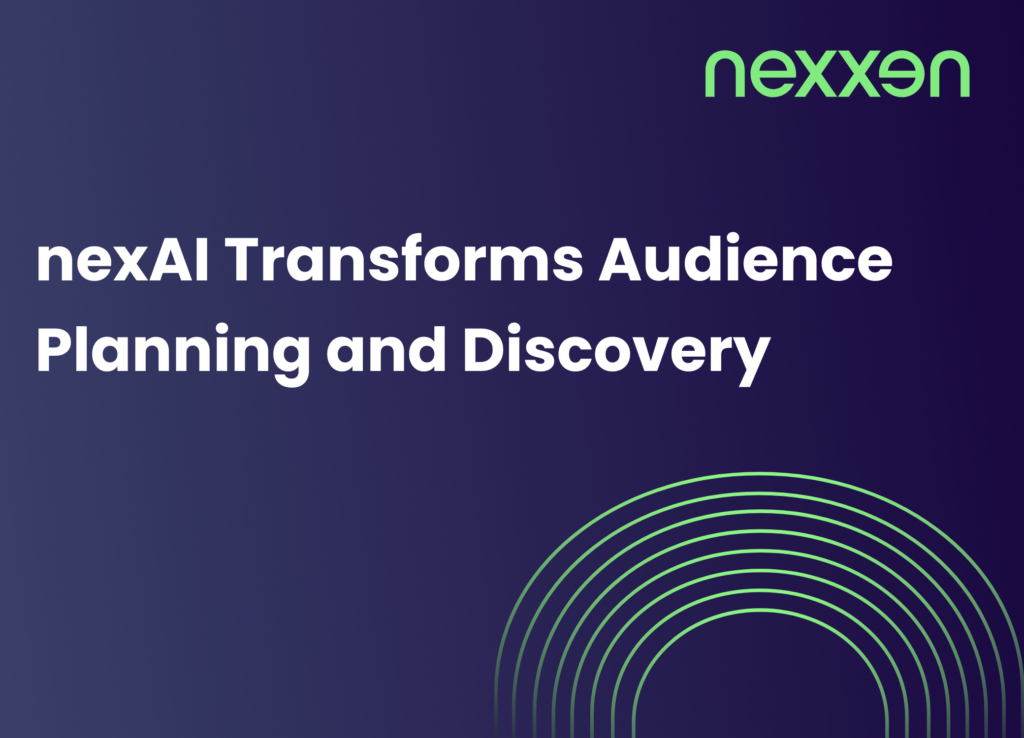
Linkedin Icon-xtwitterlogo-black Native integration of generative AI in the Nexxen Data Platform builds on machine learning to automate and streamline campaign strategy development Brands like LG Ad Solutions to leverage a nexAI Discovery assistant that translates audience behavior into informed insights and actionable strategies, seamlessly connecting to activation through the Nexxen DSP New York, May 22, 2025 – Nexxen (NASDAQ: NEXN), a global, flexible advertising technology platform with deep expertise in data and advanced TV, today announced the newest advancement of nexAI: the introduction of generative artificial intelligence (“AI”) to the Nexxen Data Platform, including a UI assistant within its proprietary insights tool Nexxen Discovery. With this advancement, nexAI enables clients to quickly turn complex consumer data into clear, actionable audience profiles and campaign planning for seamless activation. More specifically, nexAI now delivers benefits across four key areas: Speed and efficiency: Instantly generates audience-specific market research and campaign strategy presentations, cutting down insight development from days to minutes Accessible unique data: Democratizes access to Nexxen’s rich behavioral data and sophisticated insights without relying on expert analysts or multiple platform logins Actionability: Bridges insights directly to campaign strategies, enabling immediate activation across Nexxen’s platform, including a direct connect to its DSP Market differentiation: Equips teams with proprietary intelligence that traditional market research platforms cannot match, rooted in organic consumer behavior signals “The Nexxen Data Platform has always been powered by advanced machine learning to help our clients navigate the fragmented media landscape. With the introduction of generative AI and the nexAI Discovery assistant, we’re taking that foundation to the next level — turning complex datasets into clear, strategic guidance in an instant,” said Karim Rayes, Chief Product Officer, Nexxen. “This is about removing friction from the entire workflow, enabling advertisers and agencies to move from insights to activation faster, smarter and with greater confidence.” Nexxen Discovery analyzes content engagement and user behavior across digital, social and TV on-demand environments, interpreting context at scale to enable a multidimensional view of audience preferences and trends. Some brands, like LG Ad Solutions, directly upload their first-party data onto Nexxen’s platform and layer it with Nexxen Discovery’s contextual datapoints. This helps them more deeply understand and act on target audience behaviors, consumption trends and more, for pre-campaign planning and activation strategies. The integration of generative AI natively into Discovery allows users to generate polished, compelling audience reports — complete with brand share of voice, sentiment analysis, audience interests and strategic recommendations — based on just a few inputs. “At LG Ad Solutions, we’re focused on translating data into real-world impact. nexAI’s integration of generative AI into audience discovery marks a meaningful evolution — giving our teams the ability to surface insights faster and with greater clarity,” said Ioanna Protogiannis, Senior Director, Measurement and Reporting Solutions, LG Ad Solutions. “It’s a powerful tool that helps us stay agile, drive smarter campaign decisions and ultimately deliver better outcomes for our clients.” The nexAI Discovery Assistant will be available to Nexxen Discovery users with self-service access beginning this month, with broader availability and enhancements planned throughout the year. About Nexxen Nexxen empowers advertisers, agencies, publishers and broadcasters around the world to utilize data and advanced TV in the ways that are most meaningful to them. Our flexible and unified technology stack comprises a demand-side platform (“DSP”) and supply-side platform (“SSP”), with the Nexxen Data Platform at its core. With streaming in our DNA, Nexxen’s robust capabilities span discovery, planning, activation, monetization, measurement and optimization – available individually or in combination – all designed to enable our partners to achieve their goals, no matter how far-reaching or hyper niche they may be. Nexxen is headquartered in Israel and maintains offices throughout the United States, Canada, Europe and Asia-Pacific, and is traded on the Nasdaq (NEXN). For more information, visit www.nexxen.com Forward-Looking Statements This press release contains forward-looking statements, including forward-looking statements within the meaning of Section 27A of the United States Securities Act of 1933, as amended, and Section 21E of the United States Securities and Exchange Act of 1934, as amended. Forward-looking statements are identified by words such as “anticipates,” “believes,” “expects,” “intends,” “may,” “can,” “will,” “estimates,” and other similar expressions. However, these words are not the only way Nexxen identifies forward-looking statements. All statements contained in this press release that do not relate to matters of historical fact should be considered forward-looking statements, including without limitation statements regarding the NexAI and any benefits or insights associated with the solutions as well as any benefits associated with any of Nexxen’s other offerings and products and platforms including the general Nexxen AI capabilities, Discovery Tool, cross-screen measurement tools, Data Platform and CTV offering. These statements are neither promises nor guarantees but involve known and unknown risks, uncertainties and other important factors that may cause Nexxen’s actual results, performance or achievements to be materially different from its expectations expressed or implied by the forward-looking statements, including, but not limited to, the following: negative global economic conditions; ,including risks related to tariff impacts or policy shifts that could materially affect market sentiment, consumer behavior and advertising demand; global conflicts and war, including the current terrorist attacks by Hamas, and the war and hostilities between Israel and Hamas and Israel and Hezbollah, and how those conditions may adversely impact Nexxen’s business, customers, and the markets in which Nexxen competes. Nexxen cautions you not to place undue reliance on these forward-looking statements. For a more detailed discussion of these factors, and other factors that could cause actual results to vary materially, interested parties should review the risk factors listed in the Company’s most recent Annual Report on Form 20-F, filed with the U.S. Securities and Exchange Commission (www.sec.gov) on March 5, 2025. Any forward-looking statements made by Nexxen in this press release speak only as of the date of this press release, and Nexxen does not intend to update these forward-looking statements after the date of this press release, except as required by law. Read Next Connect With Us Learn how you can
TV Search Quiz: On What Streamer Can I Watch ‘The Bear’ And ‘NCIS’ Episodes?

Nexxen, Extra and Guild Win ‘Most Effective/Measurable Campaign’ at 2025 Digiday Content Marketing Awards

Nexxen has been named a winner at the 2025 Digiday Content Marketing Awards in the “Most Effective/Measurable Campaign” category alongside agency partner Extra and client Guild.
Nexxen Expands EMEA Sales Leadership with Lisa Kalyuzhny

Nexxen announced the appointment of seasoned business development and digital sales executive Lisa Kalyuzhny as Vice President of Sales, EMEA.
The NBA Finals: A Marketing Slam Dunk

Every June, millions gather around screens to watch the NBA Finals, and brands that align with this cultural phenomenon often find themselves scoring big. Angel Rios, Manager, Product and Solutions Marketing, explores the impact and reach brands can have during this event, and how they can utilize this unmatched opportunity for success.
New York Times Advertising, e.l.f. and Business Insider are 2025 Digiday Content Marketing Awards winners

Why everyone in adtech is suddenly talking about creative again
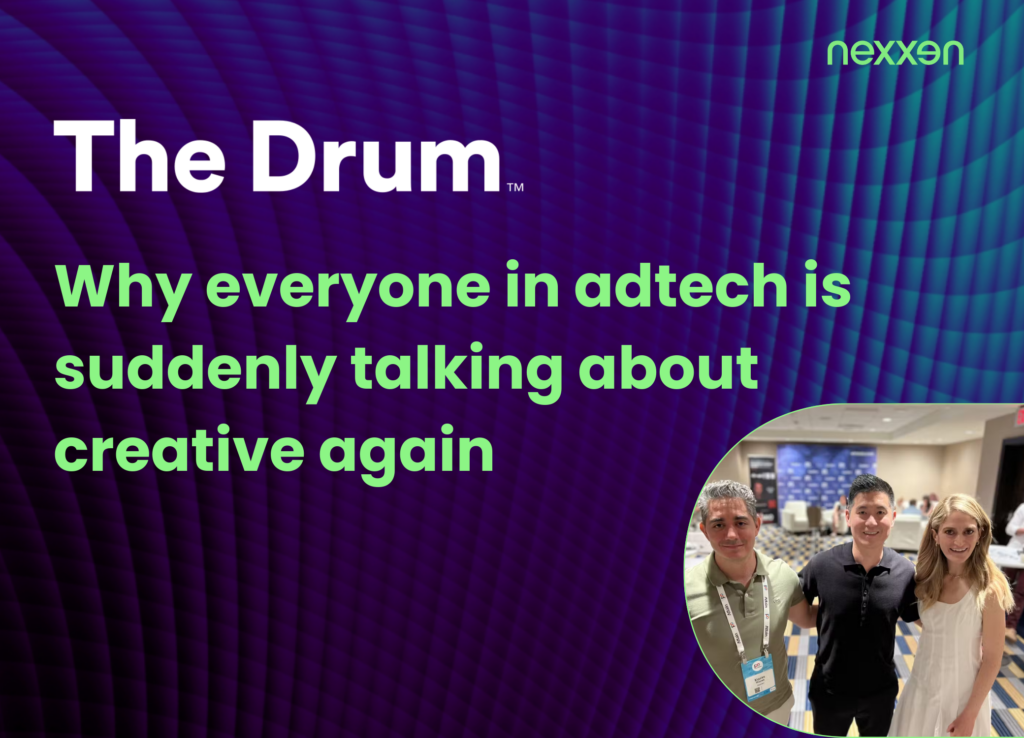
Chrome’s Cookie Commotion: Is it Finally Over?
